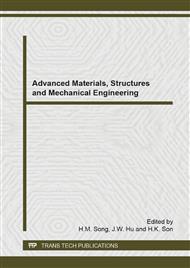p.723
p.731
p.737
p.745
p.749
p.755
p.760
p.765
p.770
Experience of Replacing Basalt Aggregate by Limestone’s in Porous Asphalt Concrete
Abstract:
In order to reduce the cost of Porous asphalt concrete and the effective use cheap limestone widely distributed in local, the gradation design works of limestone-typed PAC is presented in this paper. Considering convenience of building and testing for local enterprises, Marshall Design Method, still used in local standards, is adopt. Limestone usually shows low strength and easy break, which obviously affect the performance of mixture. Therefore, Forming temperature and beat numbers of Marshall Test is researched. The results show that: a) Regular aggregate, whose shape is similar to a cube, with low flat ratio and low crushing value is important for improving the performance of limestone-typed PAC. b) Forming temperature and Beat number is suggested taking 155°C and 35 times. c) The standard of limestone-typed PAC should not be as same as basalt-typed. The indices can be suitably lessened according to the actual conditions of aggregates.
Info:
Periodical:
Pages:
749-754
Citation:
Online since:
September 2014
Authors:
Keywords:
Price:
Сopyright:
© 2014 Trans Tech Publications Ltd. All Rights Reserved
Share:
Citation:


